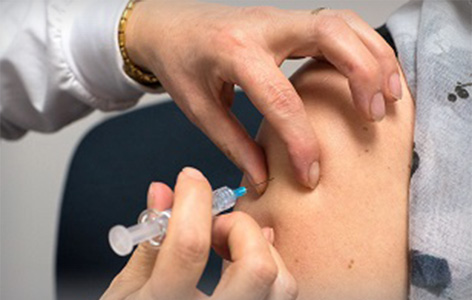
By: Kevin Robb, ORT Times Science Writer
When will there be a vaccine? This seems to be the question on everyone’s lips as researchers scramble to devise solutions to the COVID‑19 pandemic. While not the only hope for an end to the coronavirus, an effective vaccine could greatly mitigate transmission.
A vaccine works by introducing a safe form of the virus into the body in order to evoke an immune reaction. The immune system then develops a ‘memory’ of the virus so that it can more rapidly eliminate it if encountered after vaccination. To be successful, the vaccine needs to provide long-term protection by stimulating a sufficiently potent immune response. This is influenced by several factors, including genetic and environmental variables. Notably, individuals over age 50 often do not respond as effectively to vaccines, and this population is at greater risk of severe COVID‑19. For these reasons, vaccine development is a complex problem that can be approached from several different angles, including investigation of different vaccine types. The following are the main types of vaccines under study for COVID‑19:
Live-attenuated or inactivated vaccines: These vaccines use a weakened version (live-attenuated) or dead (inactivated) virus. Live-attenuated vaccines tend to provide more robust and long-lasting immunity, but they may not be suitable for individuals with compromised immune systems as there is a risk that residual, living virus could become infectious. While this issue can be avoided using dead viruses, inactivated vaccines often bestow protection for a shorter period and require multiple booster shots over time.
Protein-based vaccines: Protein-based vaccines use a small fragment of the virus known as a protein subunit. For example, one protein being investigated for use in COVID-19 vaccines is the infamous spike protein, which gives the coronavirus its crown-like appearance. A piece of the protein can be used to prime the immune system to recognize and attack the real virus if encountered; however, like inactivated vaccines, multiple boosters may be needed to extend the duration of immunity.
Genetic vaccines: Genetic vaccines are a new class of vaccines being explored for COVID‑19. These vaccines use genetic material known as DNA or RNA that encode for specific fragments of the virus. Upon delivery, the recipient’s own cells use the genetic material to make the viral fragment, which can then prompt an immune reaction. This type of vaccine is inexpensive to make, but ongoing clinical trials are needed to better understand the safety and efficacy of the strategy.
Once a potential vaccine has been developed in the laboratory, rigorous animal testing is performed, followed by clinical trials with a small group of individuals to demonstrate vaccine safety. Subsequent clinical trials with larger groups are then needed to evaluate the ability of the vaccine to stimulate an immune response and reduce infections among the vaccinated population.
All the steps in vaccine development require a huge amount of time and effort. While the task is challenging, hope can be found in knowing brilliant and diverse teams of scientists around the globe are working tirelessly on this issue.




